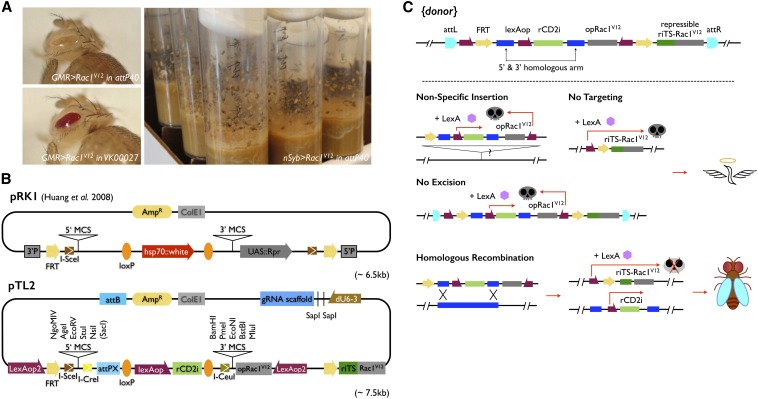Figure 2.
Repressor-based selection and GT plasmids. (A) Rough to bar eye and dead pupa phenotypes were elicited by GMR > Rac1V12 and nSyb > Rac1V12, respectively. (B) pTL2 has a similar organization to pRK1. Note the presence of lexAop-rCD2i, instead of hsp70::white, as the marker residing between the 5′ and 3′ multiple-cloning sites (MCS) and use of LexAop2-opRac1V12, rather than UAS::Rpr, for eliminating nonspecific insertions. Two more modules, LexAop2 and riTS-Rac1V12, are separated by the FRT cassette for reconstitution of a suppressible LexAop2-riTS-Rac1V12 following flip-out. A dU6-3 promoter-driven gRNA was further added with two SapI sites for easy gRNA target site cloning. (C) {donor} is first integrated at attP sites on either the second or the third chromosome. To enrich for correct GT following induction of donor DNA flip-out, three scenarios of “unwanted” events are eliminated by lethality selection. Nonsuppressible Rac1V12 is expressed under syb-LexA::p65 to kill organisms experiencing “no excision” or “nonspecific insertion.” In the case of “no targeting,” the reconstituted LexAop2-riTS-Rac1V12 drives lethality. By design, only after ends-out GT leading to loss of the nonsuppressible LexAop2-opRac1V12 can the organism overcome the suppressible LexAop2-riTS-Rac1V12 with lexAop-rCD2i and survive the selection.

